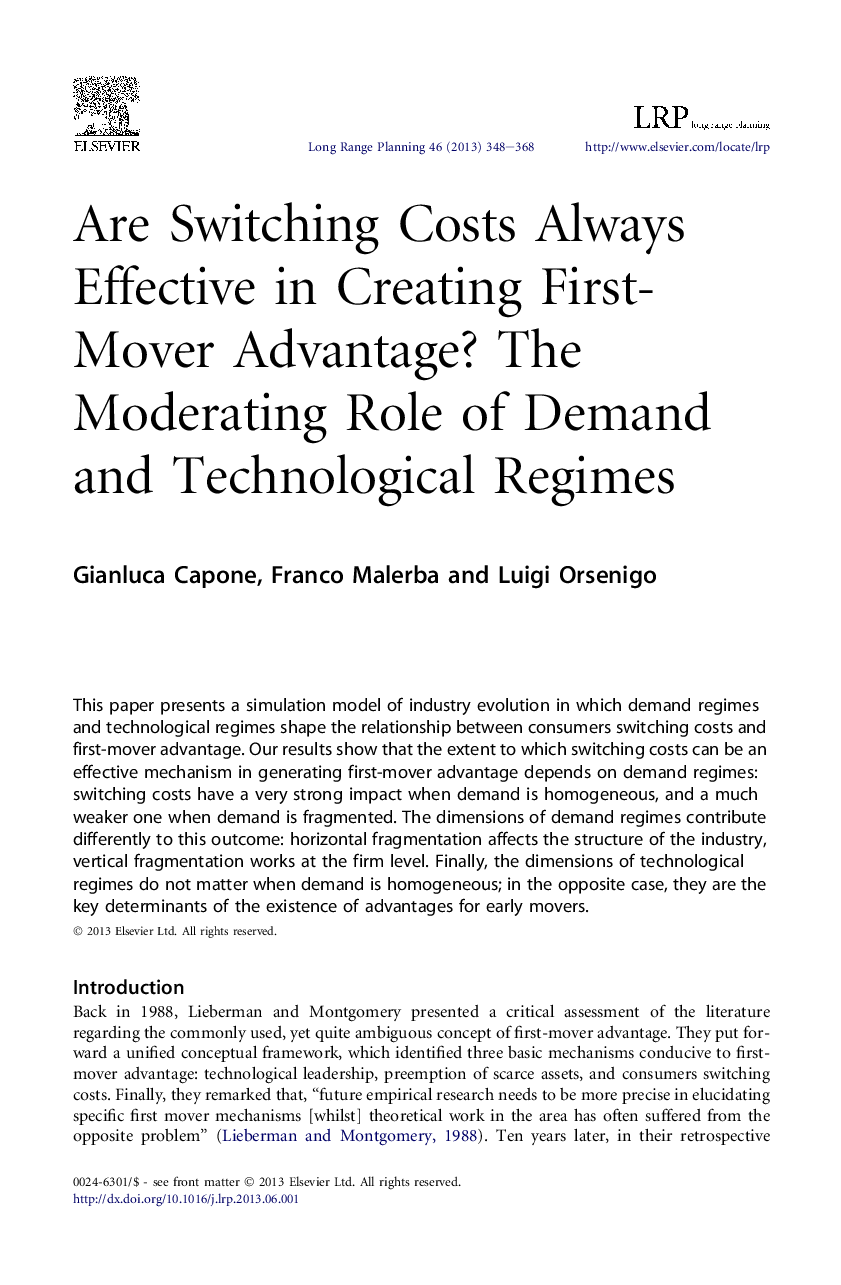| کد مقاله | کد نشریه | سال انتشار | مقاله انگلیسی | نسخه تمام متن |
|---|---|---|---|---|
| 1021384 | 1482909 | 2013 | 21 صفحه PDF | دانلود رایگان |

This paper presents a simulation model of industry evolution in which demand regimes and technological regimes shape the relationship between consumers switching costs and first-mover advantage. Our results show that the extent to which switching costs can be an effective mechanism in generating first-mover advantage depends on demand regimes: switching costs have a very strong impact when demand is homogeneous, and a much weaker one when demand is fragmented. The dimensions of demand regimes contribute differently to this outcome: horizontal fragmentation affects the structure of the industry, vertical fragmentation works at the firm level. Finally, the dimensions of technological regimes do not matter when demand is homogeneous; in the opposite case, they are the key determinants of the existence of advantages for early movers.
Journal: Long Range Planning - Volume 46, Issues 4–5, August–October 2013, Pages 348–368